The year 1880 in science and technology included many events, some of which are listed here.
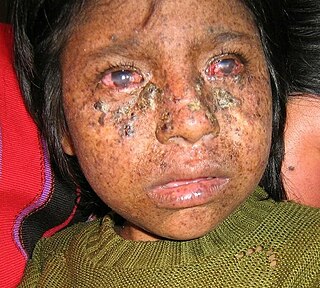
Xeroderma pigmentosum (XP) is a genetic disorder in which there is a decreased ability to repair DNA damage such as that caused by ultraviolet (UV) light. Symptoms may include a severe sunburn after only a few minutes in the sun, freckling in sun-exposed areas, dry skin and changes in skin pigmentation. Nervous system problems, such as hearing loss, poor coordination, loss of intellectual function and seizures, may also occur. Complications include a high risk of skin cancer, with about half having skin cancer by age 10 without preventative efforts, and cataracts. There may be a higher risk of other cancers such as brain cancers.
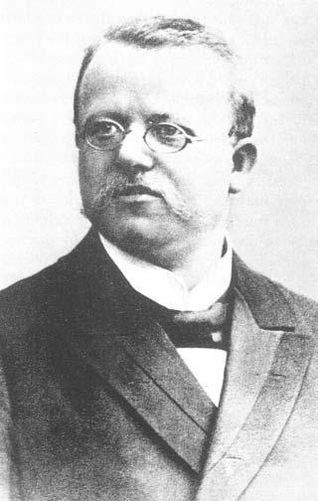
Hermann Oppenheim was one of the leading neurologists in Germany.

Paul Gerson Unna, was a German physician specialized in dermatology and one of the pioneers in dermatopathology.

Ferdinand Karl Franz Schwarzmann, Ritter von Hebra was an Austrian Empire physician and dermatologist known as the founder of the New Vienna School of Dermatology, an important group of physicians who established the foundations of modern dermatology.
The Vienna School of Dermatology was a group of dermatologists affiliated to the University of Vienna who became an important reference in the development of modern dermatology in the second half of the 19th century. It was founded by Ferdinand Ritter von Hebra (1816–1888) with the collaboration of his mentor, Carl Freiherr von Rokitansky (1804–1878) and Carl Wedl (1815–1891), a pathologist with interest in skin diseases. Their pupils, Isidor Neumann (1832–1906), Salomon Stricker (1834–1898), Heinrich Auspitz (1834–1885), Moritz Kaposi (1837–1902), all of the same generation; and Paul Gerson Unna (1850–1929) and Salomon Ehrmann (1854–1926), continued the tradition. Unna later became the father of German dermatopathology.

Ernest Henri Besnier was a French dermatologist and medical director of the Hôpital Saint-Louis in Paris.
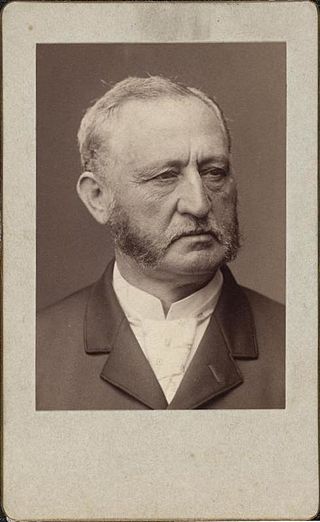
Isidor Neumann, Edler von Heilwart was a dermatologist from the Austro-Hungarian Empire.
Adolf Jarisch was an dermatologist from the Austro-Hungarian Empire who specialized in the care of venereal disease. The Jarisch-Herxheimer reaction, an inflammatory response that he noted following treatment for syphilis, is partially named after him. Jarisch was the father of a noted pharmacologist, Adolf Jarisch Jr.
Carl Heitzmann was a pathologist and dermatologist in the Austro-Hungarian Empire.

Anton Elfinger was an Austrian physician and illustrator.

Friedrich Wilhelm Felix von Bärensprung, sometimes Baerensprung, often shortened to Felix von Bärensprung was a German dermatologist and entomologist, known for his research into tinea cruris, herpes zoster and syphilis.
Josef Kyrle was an Austrian pathologist and dermatologist who was a native of Schärding.
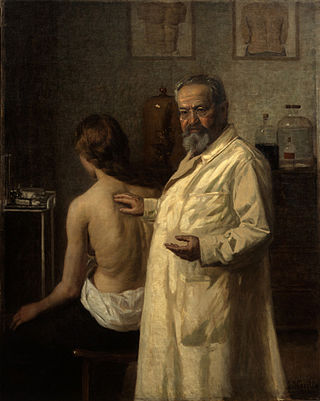
Salomon Ehrmann was a Jewish-Austrian dermatologist and histologist born in the village of Ostrovec, today part of the Czech Republic. He was an important member of the so-called Vienna School of Dermatology, a group founded by Ferdinand von Hebra (1816–1888).
Karl Kreibich was an Austrian dermatologist born in Prague.
Ernst Kromayer was a German dermatologist. He was the younger brother of historian Johannes Kromayer (1859–1934).
Johann Heinrich Rille was an Austrian dermatologist and venereologist.

Gustav Riehl was an Austrian dermatologist.

Leo von Zumbusch was an Austrian-German dermatologist. He was the son of sculptor Kaspar von Zumbusch (1830–1915).
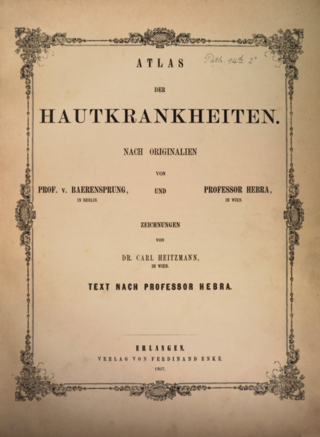
The Atlas der Hautkrankheiten was an influential work in the field of dermatology, published in ten editions between 1856 and 1876.












